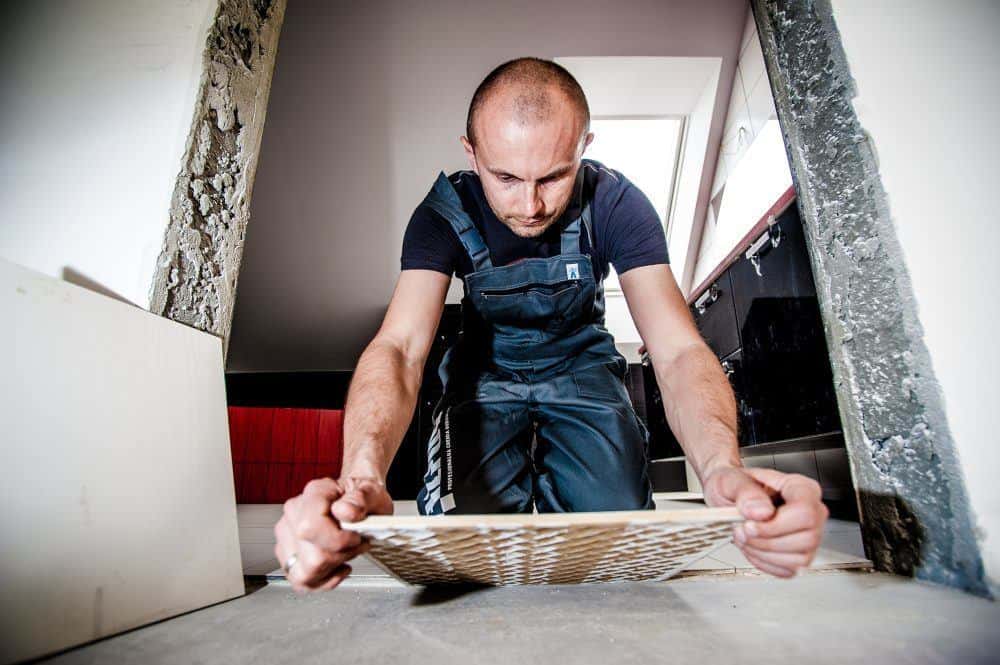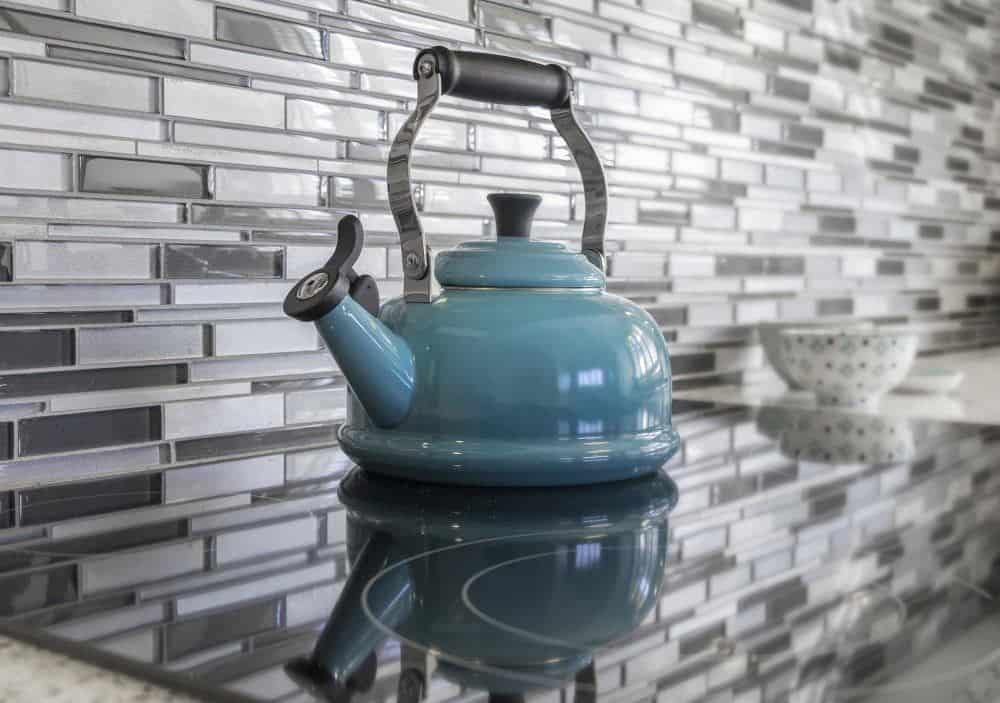Often, you may be left wondering why despite spending a lot of time and effort to clean the tiles in your bathroom, your bathroom still looks dirty and dull. The culprit is dirty and grimy grout lines, which can diminish the look of your tiled walls and floors.

Grout is a mixture of cement, water, and sand. By nature, grout is porous and tends to absorb various substances such as water, oil, and grease, which makes grout very dirty and discolored. The best method to keep the grout clean and prevent your bathroom from looking dirty is to do some grout sealing. A grout sealant keeps mold and mildew away by sealing the newly laid grout and resealing it whenever required.
Since the floor and wall tiles do not get a lot of moisture, it is recommended that you seal the grout once a year or as needed. For your bathroom backsplash and shower, you need to do grout sealing more often.
Table of Contents
Benefits of Sealing Grout
Sealing grout when it is freshly laid with a high-quality grout sealer will help prevent dirt and grime from working their way into the grout lines. Although your grout may contain additives to prevent mold and mildew, a grout sealant offers added protection.
Sealing the grout can help extend the lifespan of your grout. If you actually understand how to seal grout, then you will find that it is an extremely easy and quick job that you can do on your own. Some of the advantages of sealing grout are.
Reduces Staining
Sealing the grout can help prevent and reduce the effect of grout staining. Now, with the help of a grout sealer, there is no need for you to spend hours of your time and effort bleaching away the stains because there is a seal to protect it.
Reduces Moisture
Applying a grout sealer to the grout can help prevent moisture from penetrating the tiled surface. Grout sealing is especially important for bathrooms and kitchens because they are always in contact with water, humidity, and steam.
By following the steps below, you can learn how to seal grout and prevent the dull, stained appearance of your tiles.

How to Seal Grout: Steps
Step 1: Cleaning and Repairing the Grout
Before applying the grout sealant to the grout, you must ensure that the grout is cleaned properly. Any crumbles and cracks in the grout lines should be repaired; otherwise, all the dirt and the damaged joints will be sealed in when you apply the grout sealer. Take some warm, soapy water and using a toothbrush, try and remove the grime and dirt off the grout as much as you can.
If the grout is stained, then you can use a mixture of 1-part vinegar mixed with 1-part water. Clean the grout lines one at a time and once you have finished cleaning, let the entire area dry for at least 30–40 minutes before you begin the grout sealing process.
Step 2: Choosing the Sealer
Next, you must choose the appropriate type of grout sealer depending on the kind of tile you have and its location. There is no one-size-fits-all approach to choosing the best grout sealer and there is no single grout sealer that is ideal for all kinds of situations. You can find a variety of grout sealers that you can customize according to your requirements to a certain extent.
Certain grout sealers are best for tiles made of stone, ceramic, and marble. The amount of moisture that can be tolerated by the grout sealer also matters whether you need sealing for an area with low moisture such as your kitchen backsplash or a high-moisture area such as the bathroom shower. You can select the appropriate grout sealer depending on the type of tile and its location.
There are essentially two main categories of grout sealers that you can use to seal grout: membrane-forming grout sealers and penetrating grout sealers.
Membrane-Forming Sealers
This type of grout sealer works by creating a coating on the surface of the grout, which prevents water from infiltrating the seal. This is more suitable when sealing grout in the kitchen. It is not recommended to use membrane-forming grout sealers in your bathroom because this type of grout sealer do not allow the water trapped below the tile to evaporate and in a shower, this can lead to the growth of mold and mildew in the grout.
The membrane-forming grout sealers also contain pigments that can change the color of the grout after sealing. While this type of grout sealers are suitable to seal unglazed tiles such as stones, they are not recommended to seal glazed tiles like ceramics.
Penetrating Sealers
This type of grout sealer uses either a water base or a mineral spirit base to seal, which allows the minute particles of silicone or latex in the formula to penetrate the grainy structure of the grout. Since the grout is porous, the grout absorbs the silicone or latex particles, which fill the gaps after grout sealing. This helps to keep the moisture out.
Penetrating grout sealers are best for sealing damp areas like bathrooms, particularly in the shower area.

Step 3: Choosing the Sealer Applicator
You need the right kind of grout sealer applicator to seal the grout successfully. While aerosol grout sealers that can be sprayed on are the most popular because of their convenience and ease of use, in most cases, these spray-on grout sealers may not be suitable for the project.
Step 4: Applying the Sealer
Apply the grout sealer carefully and seal small sections at a time. Start from the left and move to your right. Working methodically as you seal will help your grout lines look neater and more consistent. This way, you will not overlook any areas and the grout sealer will offer better protection. Keep a dry cloth at hand and use it to wipe off any excess grout sealer.
Avoid dripping the grout sealer on glazed tiles, whether you are using an applicator or sponging a large area. If any grout sealer drips onto the tile, make sure to remove it immediately before the grout sealer begins to dry. Leaving it for a longer time will leave a foggy layer over the tile, which will be impossible to remove later on when the seal is dry.
Step 5: Applying the Second Coat
Once you have applied the first coat of grout sealer, let it dry for at least an hour before applying the second coat. It is recommended that you apply at least three coats of the grout sealer in order to seal it well and get sufficient protection. Once the second coat dries, use a few drops of water to test the surface. The water should bead up into drops if the seal is effective. If this does not happen, then apply another coat of the grout sealer to ensure that you get the best results.
Once all the steps are completed, let the tiled area dry fully. While some grout sealers may require 24 hours for curing, others may take around 48 hours to seal. To be sure, check the manufacturer’s instructions on how to seal grout.

How to Seal Grout: Some Dos and Don’ts
Dos
Here are a few tips that you should follow while sealing the grout for best results:

Don’ts
It is extremely important to know how to seal grout and here are mistakes that you should avoid:

Grout is very porous and can attract dirt, grime, bacteria, mold, and mildew. Sealing the grout can help protect it from all these contaminants and the seal will also prevent it from getting dirty and stained. While you may find it a hassle to keep the room where you are sealing the grout off-limits for a couple of days, you will realize that it is completely worth it when you clean the grout next time.
Using a good sealer and sealing the grout well translates to lesser time spent scrubbing the grout clean. So, in short, by sealing the grout, you can make your tile and grout cleaning routine a piece of cake.
Resources:
LA Times

